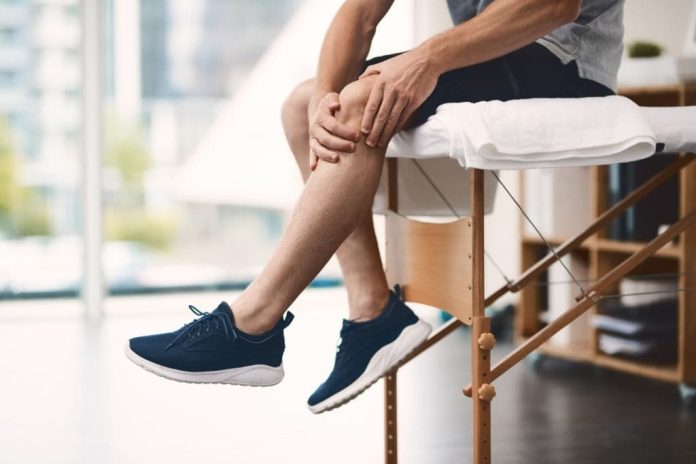It’s hard to miss people with knee issues; there is always someone around you complaining of nagging, constant and crippling knee pain that makes their lives hell. The scary part is not the pervasiveness of the problem; rather, it is the fact that there is no age limit for it. Young, as well as old, are part of the agony in this case.
Knee pain can happen because of many different reasons; some avoidable, others inevitable. This sounds gloomy, and it is! But, it’s not a hopeless situation. A few smart, simple, and convenient moves at home can help keep knee issues away.
Exercise is a great way of improving the flexibility of knee joints, but repetitive pressure can sometimes harm the joint instead of making things better. Add a little comfort and support to the exercise regime with a pair of knee wraps and help your joint bear the brunt easier.
Table of Contents
What Are Knee Wraps?
Knee wraps are protective, elastic garments that are wrapped around the knee in a spiral. They are made of neoprene (a huge favorite for knee wraps and a breathable material), which has the right kind of elasticity for the job that a knee wrap has to do. They are worn to defend the knee joints and connective tissues against injury during heavy weight lifting.
Knee wraps are quite amazing; they not only hedge against injury but also help competitive weightlifters lift heavier. Elastic material stores energy in the downward movement during a squat and releases it in the upward motion, which releases massive energy, supporting the lift a little more.
Lifting knee wraps work wonders for your quads and tendons as well. They help keep the quads safe from tearing under pressure during weighted squats by reducing stress on the tendons. They are perfect for bodybuilders and weight lifters.
Causes Of Knee Pain:
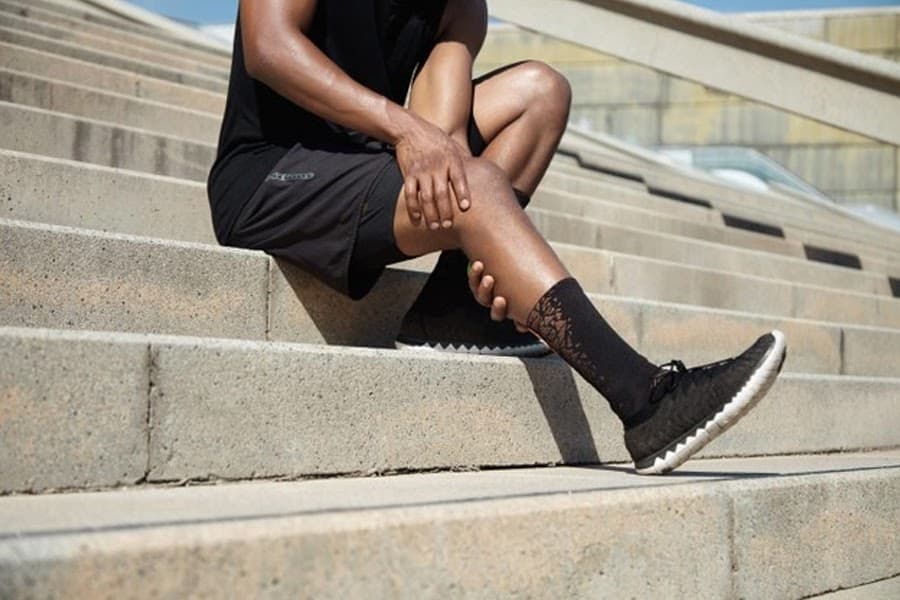
Injury, Including Sport
One common cause of knee pain and discomfort is a past injury. If you have had a severe injury that tore up your quads, tendons or hurt your knees somehow, you will keep feeling the effects long after.
It won’t just stop at constant discomfort (which is not a small problem on its own); you might have to use external support to keep your knee in a working condition.
Overuse Or Repetitive Movement
Knee pain is not restricted to having a severe and sudden injury; knees become weak and lose flexibility even with the repetition of common daily tasks like walking, running, lifting, etc.
You did not necessarily do anything different or wrong to develop the annoying and destroying pain in the knee; it can happen because of repetitive knee flexing.
Inflammation Of Tendons
Yet another common cause is the inflammation of the knee tendons (bands of tissue that connect muscles to the bones). This problem occurs mostly among those who put tendons under a great deal of stress during jumping, running, or other such activities.
The knee tendon (patella) is usually inflamed in sports where jumping and rough landings are frequent, and it is quite a painful situation.
Osteoarthritis
A most common type of arthritis that leads to severe knee and consequently mobility issues is osteoarthritis. This is a gradual erosion process of the cartilage. Cartilage protects the knee bones from shock and friction during repetitive movements
Osteoarthritis is most common among older adults. The wear and tear of the cartilage naturally occurs with age and weakens the knee joint.
Rheumatoid Arthritis
This marks inflammation of the joint. Extreme stress on the joint will lead to inflammation and pain. This extreme stress might have come from osteoarthritis (loss of cartilage) or even before that because of an injury.
Typically, the osteoarthritis condition occurs later in life, while rheumatoid knows no such age restrictions.
Obesity
Obesity is a leading cause of knee inflammation and pain. A lot of research supports the assumption now that obesity can lead to inflamed knees and cause multiple issues. The link between obesity and knee pain is pretty strong, and it is well supported by science.
How Can I Improve My Knee flexibility?
It is important to keep your knees moving even though extreme repetitive movements can cause side effects. A blend of light and right exercises with external support like a knee wrap will help keep your knee flexible and strong.
If you have read the article this far, you may have developed the fear that moving your knees too much may lead to terrible knee pain in the long run. It may be true if you are stressing the knee without support for tendons, but generally, keeping it too still will harm it just as well.
So keep your knees moving with thoughtful exercises and Knee wraps.
Knee Exercises To Improve Strength & Flexibility:
Here is a list of exercises you can do at home to improve knee strength and flexibility without having to go through invasive surgeries.
1: Squats
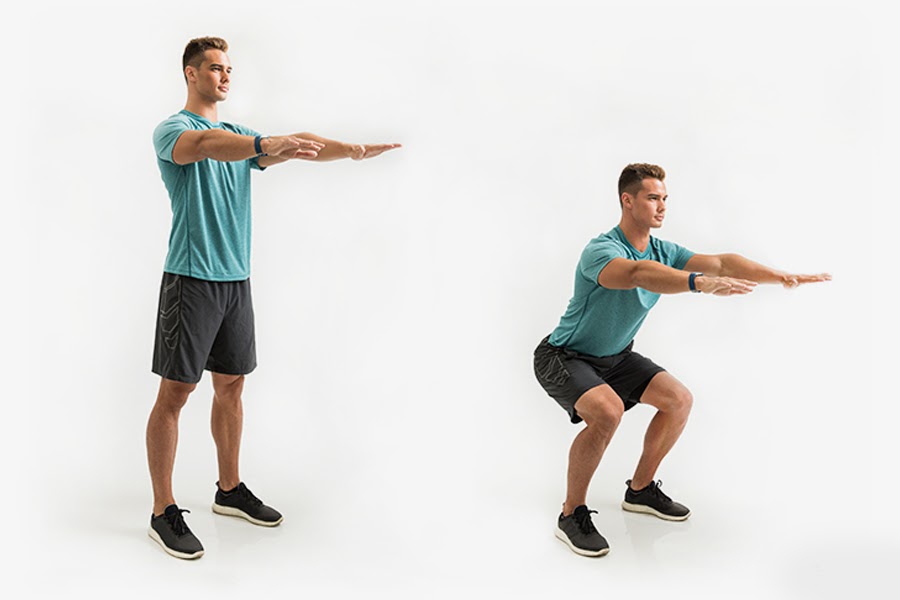
Perform squats to keep your knees strong. Squats pull on the knee tendons, quadriceps, and hamstrings. This exercise improves the flexibility of the muscles and tendons and keeps the joint strong.
However, use special knee wraps for lifting if you are using a lot of weight with squats. It’s important to support your knees and tendons.
- Stand with your legs opened at shoulder width
- Start to squat down (like you are going to sit down on a chair)
- Keep your arms stretched forward for balancing purposes
- Stop midway and stand back up
2: Sit To Stand
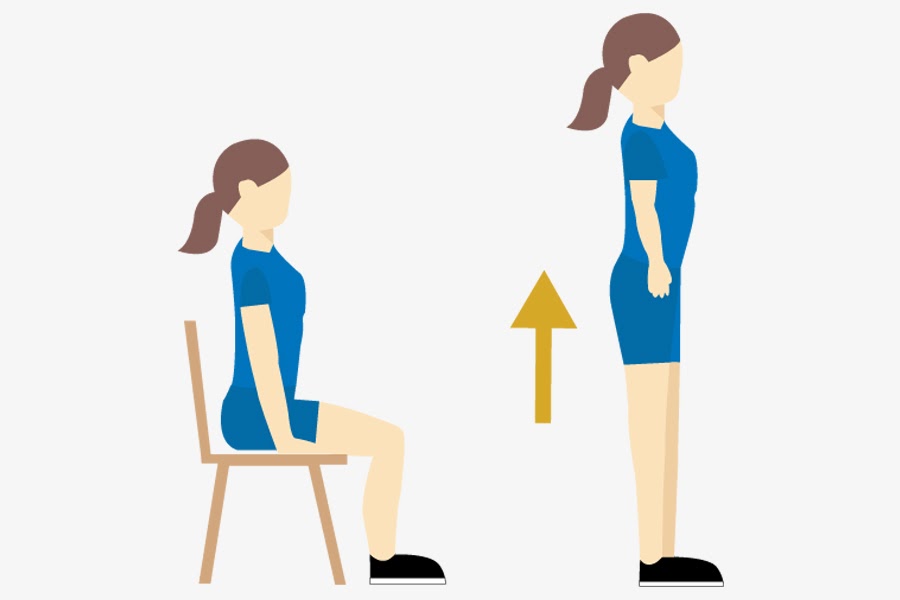
This is a useful exercise for your knees. It does not put too much pressure on the knee, but just enough to keep it in good health.
- Take a chair and sit in it slowly
- Now rise on your feet in a slow motion
- Do not do it abruptly because that will damage your knees if you already have inflammation issues.
Note: if you would like to keep things easy, go for a higher chair
3: Straight Leg Lifts
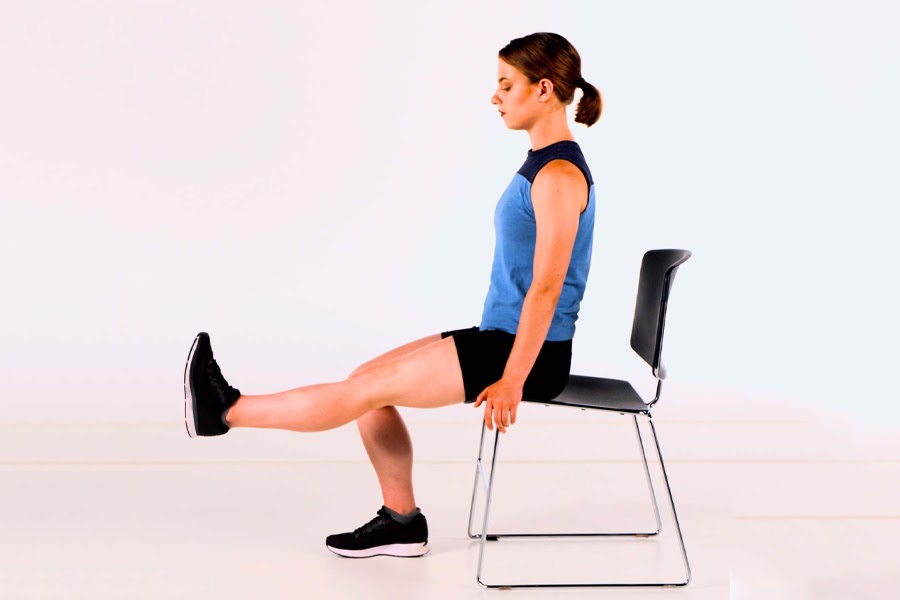
Move your leg muscles and knees with simple leg lifts. They are easy to perform and quite useful for muscle engagement in the lower leg.
- Sit in a chair and engage the muscles in the right leg
- Now start to lift the leg, straightening it in front of you
- Fully stretch it straight before you bend it and put it on the ground
- Repeat on the other leg
4: Side Leg Lifts
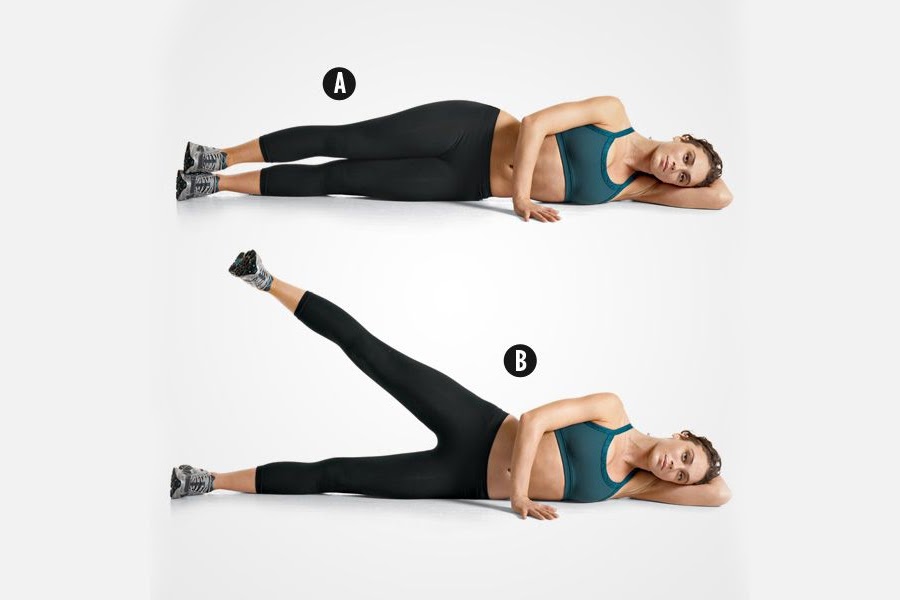
Like straight leg lifts, side leg lifts also engage leg muscles and make them stronger by engaging the muscle there.
- Lie down on the floor on your side (one leg on top of the other)
- Now raise the leg on top to almost your shoulders height
- This should be easy; hold for a few moments in this position of greater muscle challenge
- Now lower the leg back down
- Repeat on the other side
5: Short-Arc Extensions
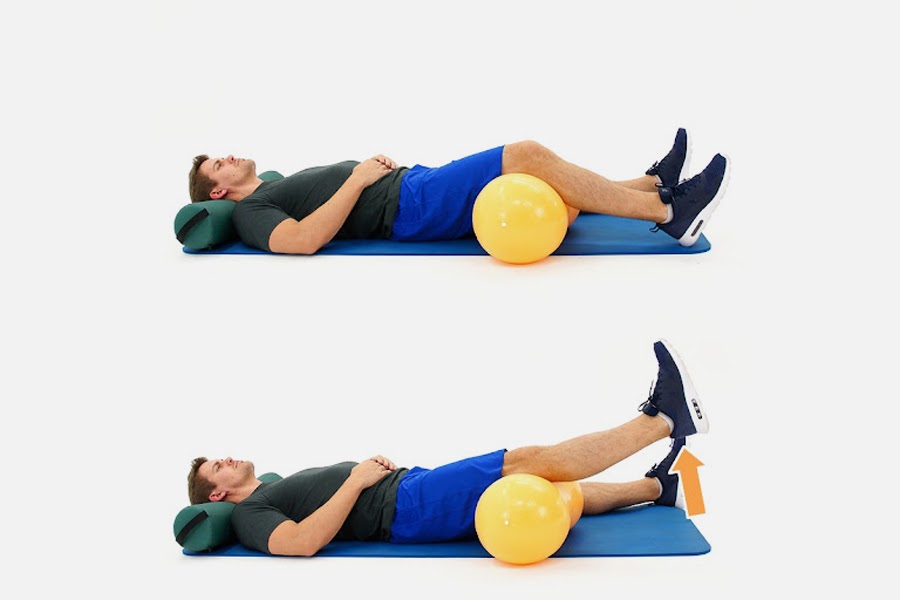
This exercise helps strengthen your legs and increase knee flexibility
- Lie on the floor with your head slightly propped up on a pillow
- Put a big ball under your knees (your legs will be bent slightly)
- To flex your knee and engage leg muscles, you will straighten your leg
- Once it is straight, hold it briefly
- Let go of the lift
- Repeat on the other leg
6: Step-ups
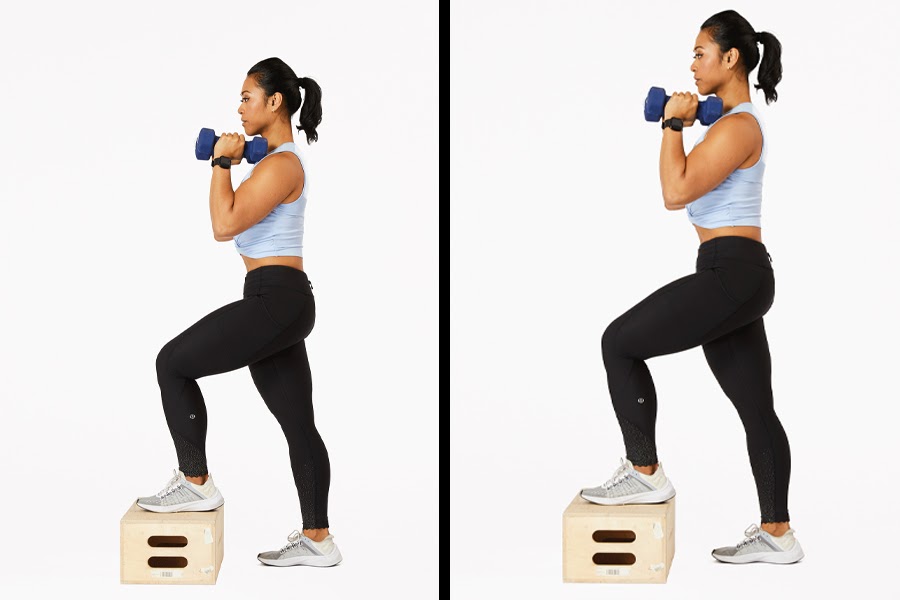
This is a bit like you are climbing stairs and benefits your quads, hamstrings, and hips simultaneously.
If you can use your stairs for this, it will be great. Alternatively, you can use a small platform-type setup for it as well.
- Keep a chair on top of the landing for support or use a different platform
- Step up with your right leg and fully straighten it (supporting your body with the chair if need be)
- Tap the floor with the other leg (do not stand on it)
- Return to the ground
- Repeat with the other leg
Note: if you feel good enough, you should leave the other leg in the air and not tap the floor at all
7: Calf Raises
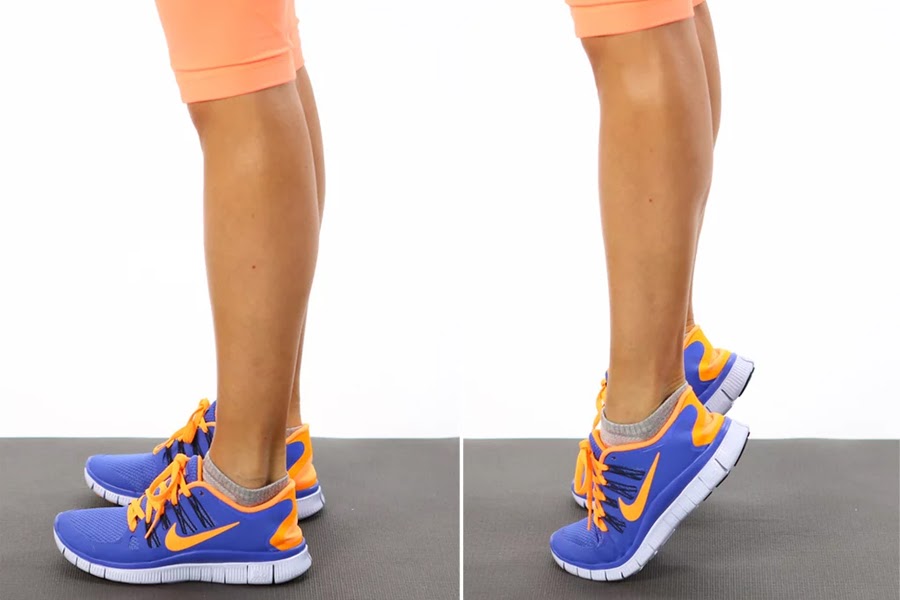
Strength exercises for legs are great, but balance and stability are just as important as strength. Add a few moves to up your balancing game like these calf raises.
Use a support system like a wall initially. Let go of it as you get comfortable with balancing yourself.
- Stand with your legs hip-width apart (this stance improves balance)
- Now raise your heels and transfer your weight on your toes
- While you are on your toes, hold for as long as you can, keeping balance
- Now lower weight onto the heels again
Note: Once you are good at balancing with this move, you can add weight to increase the challenge to the muscles
8: hamstring curls
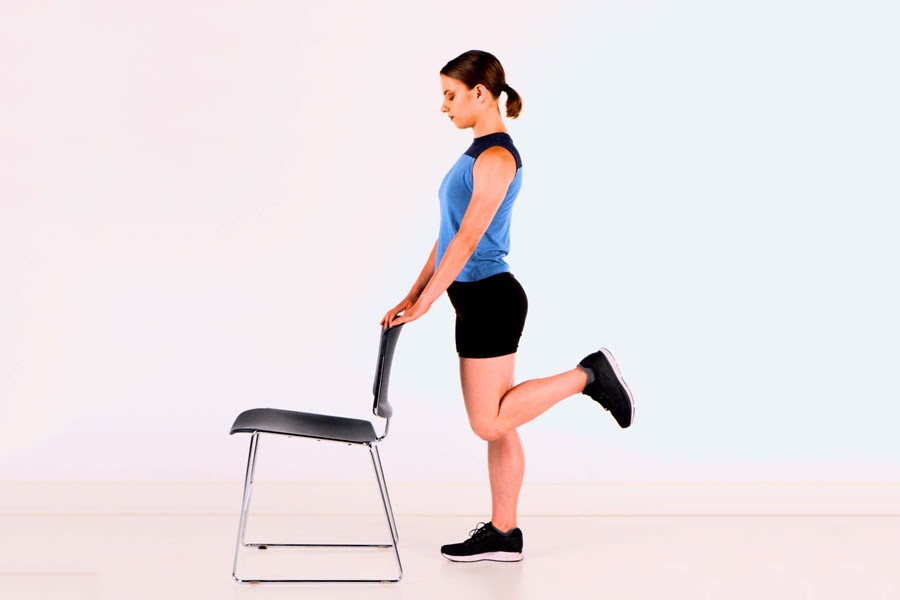
If you are experiencing knee stiffness, hamstring curls are great to get rid of the condition
- Stand with your hands on the back of a chair for support
- Legs straight (knees and thighs inline)
- Lift one leg and bend it as far backward as you can
- Repeat on the other leg
9: Hip Bridge
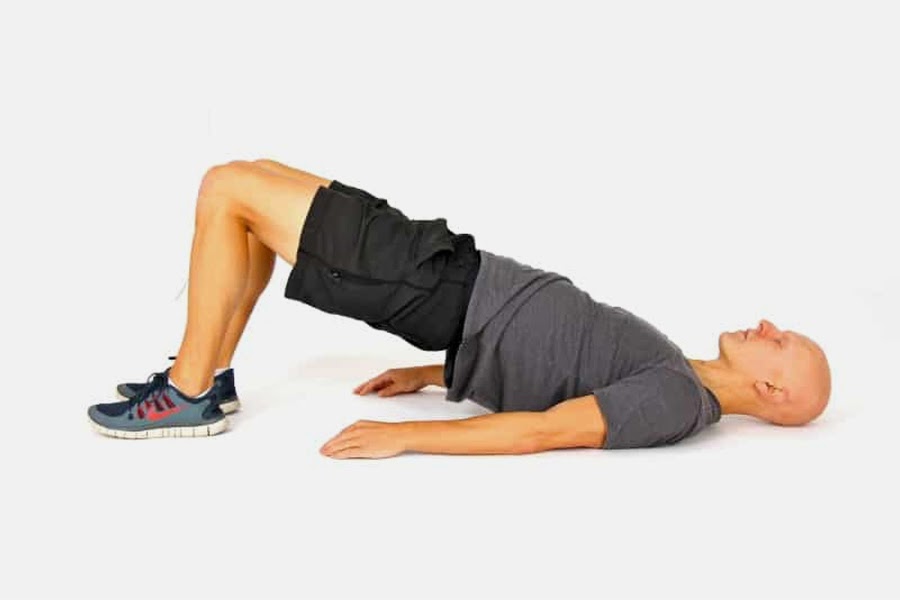
This is a great, very common compound exercise for quads, glutes, hips, and legs. It promotes strength and stability.
- Lie down on the floor
- Bend your legs at knees and feet nearing the back of the thighs
- Arms stretched straight and stuck to your sides with palms down
- Lift your middle part (your hips, and your back until a bridge is formed)
- Hold in the peak position for a while
- Come back down on the ground and repeat
10: Quadriceps Stretch
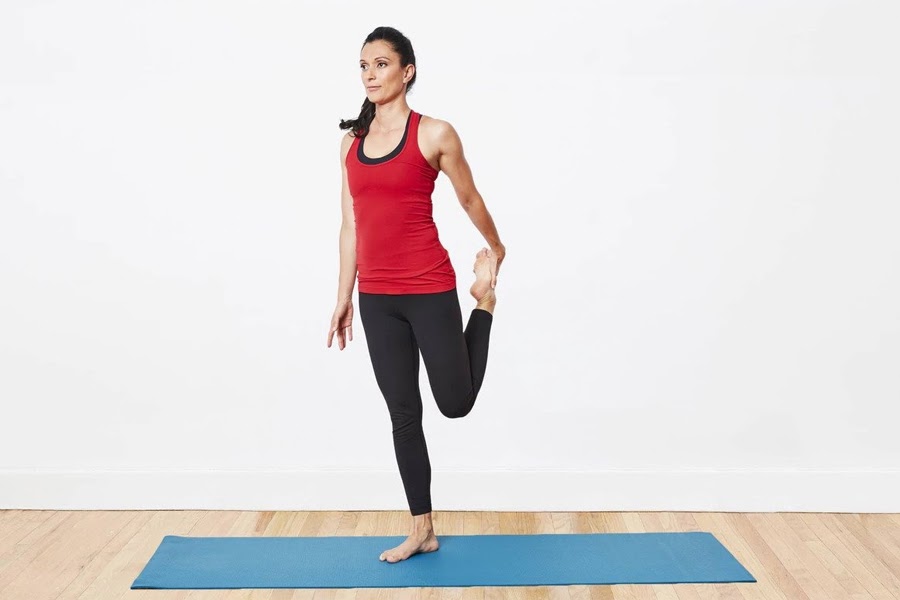
This exercise targets your quads as the name suggests. It is a simple move; there isn’t much to do on the outside, but it’s great for improving balance and stretching the hard-to-isolate quads.
- Stand straight and use a wall for support with feet shoulders width apart
- Next, lift your right leg backward toward your hip (bend at knee)
- Grab at the ankle and stretch it further towards the back of your thigh (as high as you easily can)
- Let go of the ankle and stand on both legs once again
- Repeat on the other leg
Conclusion
Knee pain is not an easy situation. It will restrict your life and mobility no matter what age you are. Some of the reasons for knee pain and inflammation may be unavoidable, like aging and daily wear and tear. Still, mostly it’s just lack of flexibility and activity or over-activity that do the damage. Exercise is a great remedy for the knees, but doing it with weights and without the support of knee wraps is a huge mistake. Choose light and the right kind of exercises to improve the strength and flexibility of your knees.
References
- Beaudart, C., et al. ‘Nutrition and Physical Activity in the Prevention and Treatment of Sarcopenia: Systematic Review’. Osteoporosis International: A Journal Established as Result of Cooperation between the European Foundation for Osteoporosis and the National Osteoporosis Foundation of the USA, vol. 28, no. 6, June 2017, pp. 1817–33. PubMed, https://doi.org/10.1007/s00198-017-3980-9.
- Jang, Hak Chul. ‘Sarcopenia, Frailty, and Diabetes in Older Adults’. Diabetes & Metabolism Journal, vol. 40, no. 3, June 2016, pp. 182–89. PubMed Central, https://doi.org/10.4093/dmj.2016.40.3.182.
- Kemmler, Wolfgang, and Simon von Stengel. ‘Exercise Frequency, Health Risk Factors, and Diseases of the Elderly’. Archives of Physical Medicine and Rehabilitation, vol. 94, no. 11, Nov. 2013, pp. 2046–53. PubMed, https://doi.org/10.1016/j.apmr.2013.05.013.
- McPherron, Alexandra C., et al. ‘Increasing Muscle Mass to Improve Metabolism’. Adipocyte, vol. 2, no. 2, Apr. 2013, pp. 92–98. PubMed Central, https://doi.org/10.4161/adip.22500.
- Reygaert, Wanda C. ‘Green Tea Catechins: Their Use in Treating and Preventing Infectious Diseases’. BioMed Research International, vol. 2018, July 2018, p. 9105261. PubMed Central, https://doi.org/10.1155/2018/9105261.
Suzuki, Yusuke, et al. ‘Home Exercise Therapy to Improve Muscle Strength and Joint Flexibility Effectively Treats Pre-Radiographic Knee OA in Community-Dwelling Elderly: A Randomized Controlled Trial’. Clinical Rheumatology, vol. 38, no. 1, 2019, pp. 133–41. PubMed Central, https://doi.org/10.1007/s10067-018-4263-3.

